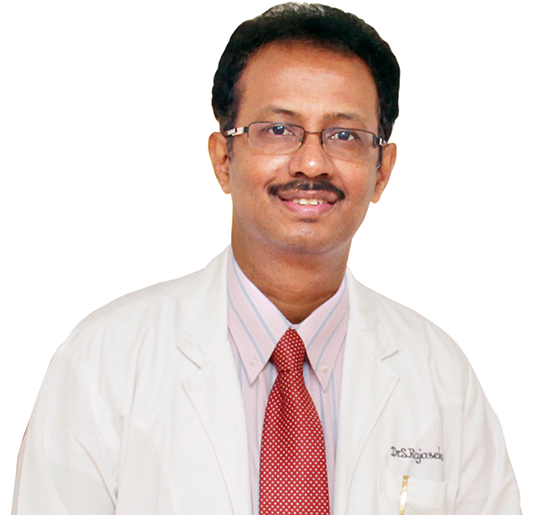feature stories
A class act—Interview with Alexander Vaccaro
Meet the AOSpine Chairperson-elect Shanmuganathan Rajasekaran
Highlights
Davos Courses 2017
Social media—friend or foe? How to manage your online reputation
A new virtual library for AOSpine Members (Spanish/Portuguese)
Educating globally—a quick guide for cross-cultural communication
Crossing borders—International Educator of the Year 2016 Juan Emmerich
Success story: regional courses in Mexico
INSIGHTS Spine is Growing Fast
AOSpine members opinion matter!


How long have you been involved with the AO Foundation and in what roles?
I am a long-standing AOSpine member and have been a faculty in numerous national and international events since the 1990s. The big involvement came with the invitation to join the Knowledge Forum Trauma in 2012. I was always interested in research, and it provided the opportunity to participate in multi-center trials and work shoulder to shoulder with many peers who are very much respected and admired worldwide. It was an enjoyable experience to be a part of the study group which came out with the classification of spinal fractures. This was followed by the election to the Chair of the International Research Commission in 2015 and to the Chairperson-Elect of AOSpine in 2017.
What were your most important AO Foundation/AOSpine milestones?
In 2015, I was elected as Chairperson of the AOSpine International Research Commission. This was a tremendous opportunity to interact with the regional "I will be stepping into the big shoes of illustrious past Chairpersons who all have contributed tremendously to AOSpine and left a legacy. It will be a challenge to match their performance but I am looking forward to this role and responsibility."research commissions and all knowledge forums. I am happy that during this tenure, the commission had major progress with the globalization of research, the introduction of metrics to evaluate each division and improve performance, and also start an international unit based mentor-mentee program. Of course, to cap it all, will be the experience of being the AOSpine Chairperson for three years from 2018. Great opportunities carry with them great responsibilities also. But it is a privilege and challenge that I am looking forward to.
What have been your proudest academic, research or professional achievements so far, and why?
The year 2017 marks 25 years since I started the practice of spine surgery. Looking back, there have been many proud moments to remember. On the professional side, establishing a large orthopedic and spine unit and creating a ‘low cost-high quality' health care system is highly satisfying. The department caters to more than 150,000 outpatients and performs more than 25,000 surgeries every year, of which 3000 are spine surgeries. 40% of these surgeries are highly subsidized. We have performed more than 10,000 highly subsidized or free surgeries where a microdiscectomy is performed for less than USD 200, a single level fusion for USD 450 and scoliosis surgery for USD 1600. We were honored to receive the Walter Blount Humanitarian Award of the Scoliosis Research Society in 2015 for the same.
"The ISSLS Prize for Spine Research is considered to be a proud moment of one's career, and we are really proud to have received it four times in 2004, 2010, 2013 and 2017 along with the Eurospine Award in 2008."In the department, we have managed to create the right blend of clinical expertise, academics, research and social service. Being appointed as the Hunterian Professor by the Royal College of Surgeons of England in 2012 for our work on growth modulation in childhood spinal deformities was also a proud moment.
On the professional leadership aspect, being the President of SICOT, Chair-Elect of AOSpine and President of CSRS-AP are also proud moments.
What do you think are young spine surgeon's biggest challenges today? What advice would you give someone who's starting their career in spinal surgery?
With so many new developments, techniques and instrumentation, the young spine surgeons are going to have an exciting career. However, there will be many challenges also.
First, knowledge about any disease and treatment will be available freely to everyone, including the patient, at the click of a button. The surgeon will no longer be privy to the knowledge of the disease or treatment options and the patient may be loaded with information and misinformation about his condition. Patient’s expectations will be more and may become demanding not only on the type of treatment but also on the total treatment experience. Patients will ask for proof of evidence that the best possible interventions available to his near and dear ones. They will demand for shared decision-making and detailed informed consents will play a big role. It will be important for the future surgeons to have good communication skills and a "I would advise that the future surgeons must look at a global development rather than just academic or technical development."great level of emotional quotient rather than just technical skills alone. In the future scenario, success will be in being a part of ‘great teams’. They must learn to form a part of and contribute effectively to a team initially and then lead the team in later years.
Over the years, the surgeon will also be subjected to increasing institutional and governmental supervision and controls. There will be pressure to reduce complications and to justify the cost-effectiveness of all interventions. There is a risk that the role of a surgeon as the dominant player in treatment may slowly undergo attrition and he just becomes a part of a large team.
The pressure on the surgeon at home and the domestic front is also going to be different. They must be adept in developing a good work/life balance. The emotional support of a family is immense, and it is important that the budding surgeon looks at a stable and happy family, right from the start.
How has AOSpine influenced your career as a surgeon?
AOSpine has made a tremendous influence on me in more ways than one. This has been both at the personal and professional level.
"It has been a privilege to share thoughts and work shoulder to shoulder with some of the giants in the field of spine surgery, persons whom you have held in high esteem and as role models. The experience of working closely with the international board, international research commission members and the Knowledge Forum steering committee is truly exhilarating. There is so much to learn from each of them in the way one sets high goals, plans and achieve the target."
At the professional level, AOSpine offers the ability to interact with a wide range of surgeons from all over the world. Case-based discussions impress you with how differently each disease is treated in different parts of the world with equal success. This broadens your ideas and concepts.
One realizes that spine surgery is almost a different specialty in different parts of the world. For the same disease, the attitude and preferences of the surgeon, patient's expectations, affordability and social culture are very diverse in different regions. Textbook solutions and published literature from one region of the world may be totally unacceptable or inappropriate for a patient from another region due to differences in social background and affordability. Rather than the policy of ‘one hat fits all', we should strive to establish ‘appropriate solutions' for our patients. Being an AOSpine member allows one to learn a lot from each other as we are truly international and have the largest membership in the spine community.
The cream of the cake is, however, the opportunity for international friendship and fellowship. Over the years, you develop deep and long-lasting family-like relationships with so many members across the continents. AOSpine opens the world to you and one should not miss the opportunity of being an active member.
Biography
Prof Shanmuganathan Rajasekaran, Ph.D.
- Chairman, Dept of Orthopaedic & Spine Surgery, Ganga Hospital
- President, SICOT
- President, CSRS AP
- Adjunct Professor, Tamilnadu Dr MGR Medical University.
- Hunterian Professor, Royal College of Surgeons of England, 2011-12
- Chairperson, AOSpine International Research Commission
- Past President, Indian Orthopaedic Association
- Past President, Association of Spine Surgeons of India
- Past President, ISSLS, Canada
Meet the AOSpine Chairperson-elect Shanmuganathan Rajasekaran
Newsletter 13 October 2017
Feature stories
A class act—Interview with Alexander Vaccaro
Meet the AOSpine Chairperson-elect Shanmuganathan Rajasekaran
Highlights
Davos Courses 2017
Social media—friend or foe? How to manage your online reputation
A new virtual library for AOSpine Members (Spanish/Portuguese)
Educating globally—a quick guide for cross-cultural communication
Crossing borders—International Educator of the Year 2016 Juan Emmerich
Success story: regional courses in Mexico
INSIGHTS Spine is Growing Fast
AOSpine members opinion matter!